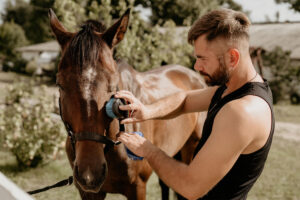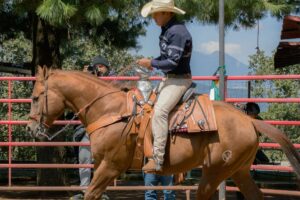
When it comes to forging a harmonious and fulfilling partnership with your horse, effective training methods are vital. The Parelli Seven Games have gained worldwide recognition among equestrians as an innovative and holistic approach to horse training. In this article, we will explore the principles behind the Parelli Seven Games and how they can enhance your horsemanship skills. Prepare to embark on an exciting journey towards a deeper connection with your equine companion!
Understanding the Philosophy of the Parelli Seven Games:
The Parelli Seven Games are rooted in the philosophy of natural horsemanship, which emphasizes clear communication and understanding between the human and the horse. Developed by renowned horse trainer Pat Parelli, this methodology focuses on establishing a language that horses naturally understand, facilitating effective communication and building mutual trust.
1. The Friendly Game:
The Friendly Game serves as the foundation of the Parelli Seven Games. It revolves around building trust, respect, and leadership with your horse. Through gentle gestures, body language, and positive reinforcement, you establish yourself as a benevolent leader in your horse’s eyes, laying a solid groundwork for further training.
2. The Porcupine Game:
The Porcupine Game teaches your horse to yield to pressure and respect your personal space. By applying rhythmic pressure and timely release, you guide your horse to respond to subtle cues. This game instills the importance of lightness and responsiveness, fostering a heightened level of communication between you and your equine partner.
3. The Driving Game:
The Driving Game encourages your horse to move forward, backward, and laterally, responding to your body language and energy. By mastering this game, you gain control over your horse’s movements and teach them to willingly yield to your guidance. It further enhances your leadership skills and deepens the bond you share with your horse.
4. The Yo-Yo Game:
The Yo-Yo Game focuses on teaching your horse to move away from pressure and maintain a steady connection with you. Through rhythmic pressure and release, you guide your horse to back up, teaching them to respect your space and boundaries. This game contributes to the development of lightness, self-carriage, and attentiveness in your horse.
5. The Circling Game:
In the Circling Game, you introduce controlled movement and direction to your horse. By asking them to circle around you at various speeds and sizes, you refine their responsiveness and willingness to follow your cues. This game enhances your horse’s balance, suppleness, and obedience, enabling effective communication even in challenging situations.
6. The Sideways Game:
The Sideways Game focuses on lateral movements, allowing you to guide your horse sideways with precision and control. By developing this skill, you enhance your horse’s flexibility, coordination, and agility. This game also provides a solid foundation for advanced maneuvers such as side-passes and half-passes.
7. The Squeeze Game:
The Squeeze Game helps your horse gain confidence and trust in navigating tight spaces or unfamiliar objects. By teaching them to willingly pass through narrow gaps or obstacles, you boost their bravery and problem-solving abilities. This game promotes adaptability, courage, and a willingness to explore new environments.
Conclusion:
The Parelli Seven Games offer a comprehensive and intuitive approach to horse training, prioritizing effective communication, mutual trust, and respect between horse and human. By incorporating these games into your training routine, you can develop a deeper connection with your equine partner and unlock their full potential. Embrace the philosophy of natural horsemanship and embark on a rewarding journey of partnership and understanding with your horse.






